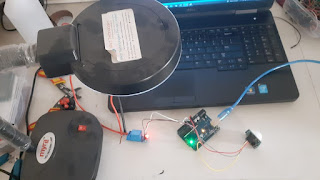DIY Motion-Activated Relay Control using Arduino


At the core of electronic systems lies a humble yet powerful component – the capacitor. Functioning as an energy storage device, capacitors store electrical energy in an electric field created between two conductive plates. These plates are separated by a non-conductive material known as a dielectric.
When a voltage is applied across the capacitor plates, an electric field emerges. This prompts electrons to accumulate on one plate while being drawn away from the other. This separation of charge creates a potential difference, or voltage, across the capacitor. This voltage is directly proportional to the amount of charge stored on the plates.
Capacitors play a versatile role in electronic circuits, serving various purposes:
Filtering:
Timing:
Energy Storage:
Ubiquitous Presence in Electronic Devices:
Capacitors are omnipresent in electronic devices, including:
Power Supplies:
Used to stabilize voltage and provide a continuous power output.
Amplifiers:
Play a role in coupling and decoupling signals, ensuring smooth amplification.
Filters:
Contribute to signal clarity by selectively allowing certain frequencies to pass.
Capacitance: The Measure of Storage:
The unit of capacitance is the farad (F), named after Michael Faraday, a pioneer in electromagnetic induction. Farads quantify a capacitor's ability to store charge. Capacitors typically have values ranging from microfarads (μF) to picofarads (pF).
Conclusion:
In the intricate dance of electrons within electronic systems, capacitors emerge as indispensable partners. From smoothing out voltage fluctuations to precisely timing signals, their applications are diverse and far-reaching.
This overview serves as a gateway to understanding the fundamental principles and applications of capacitors. As we delve deeper into the world of electronics, capacitors will continue to shine as essential components in the tapestry of modern technology.
Stay tuned for more insights into the fascinating realm of electronic components and systems!
Comments
Post a Comment